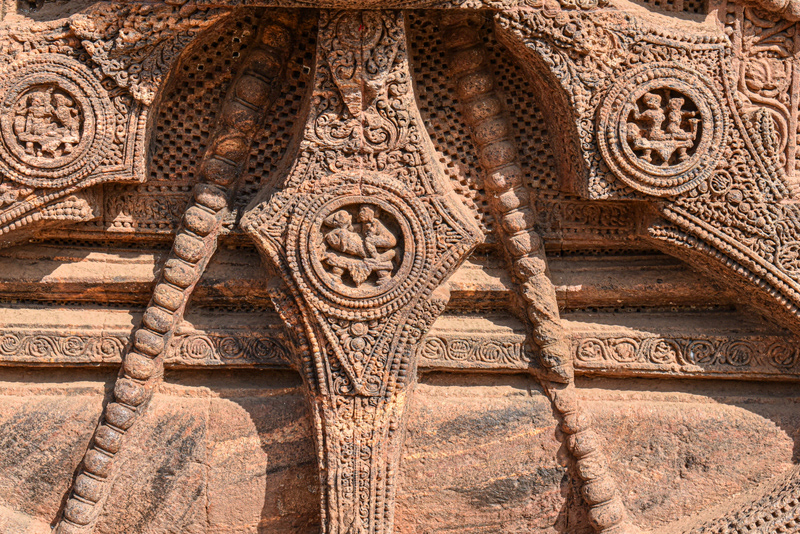

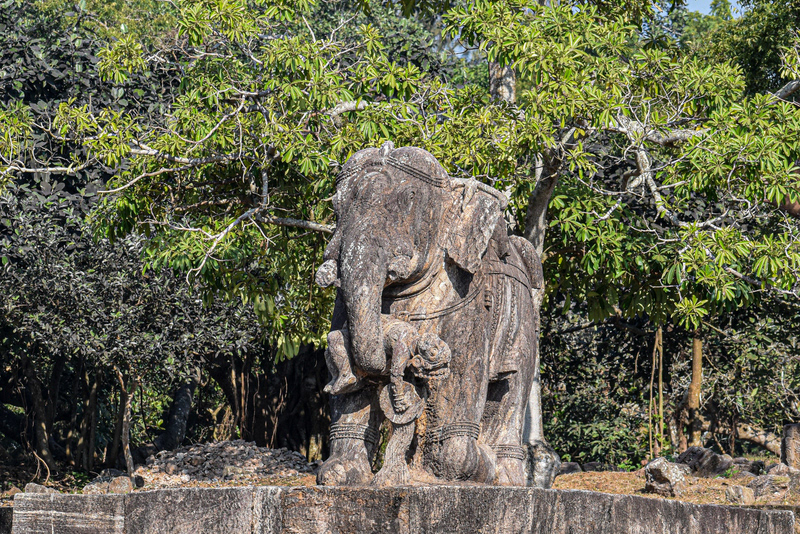
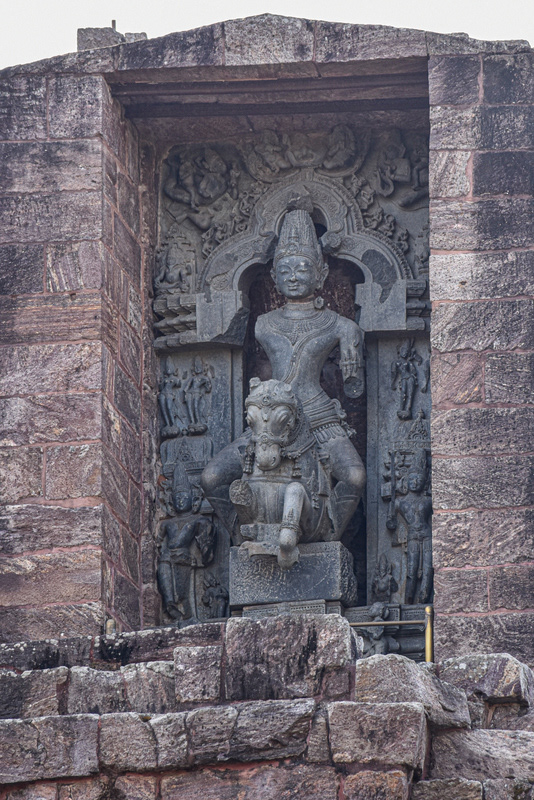
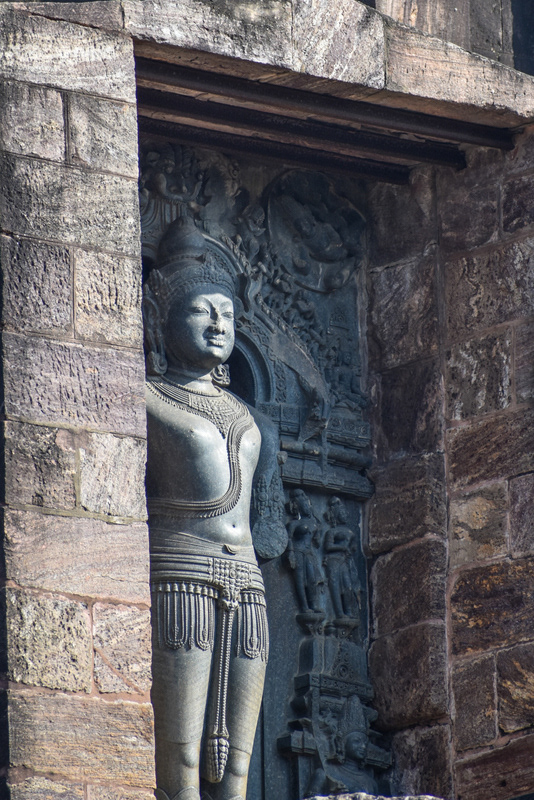
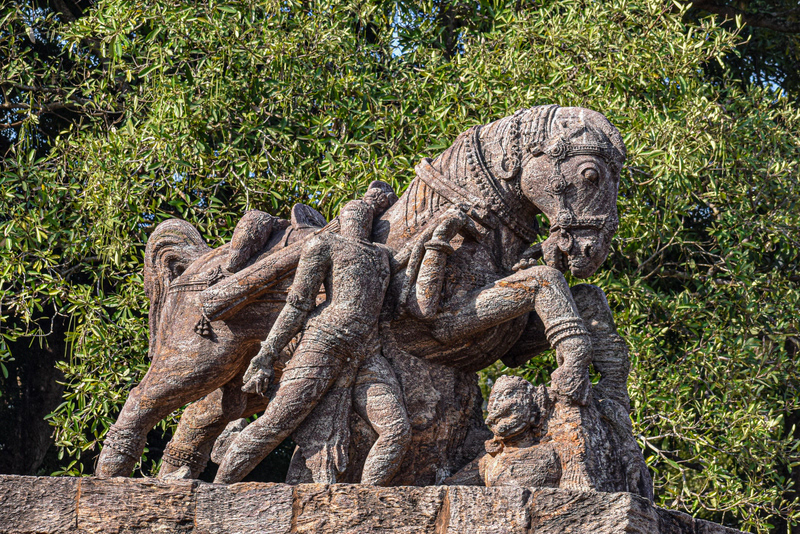
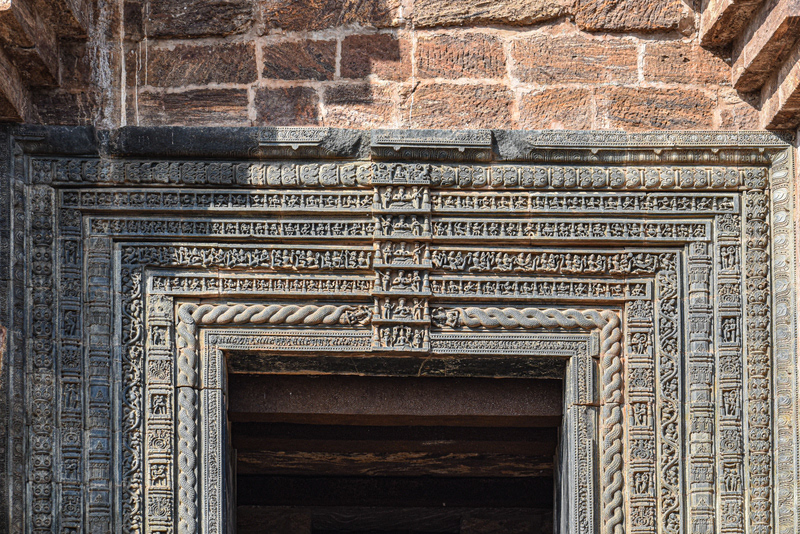
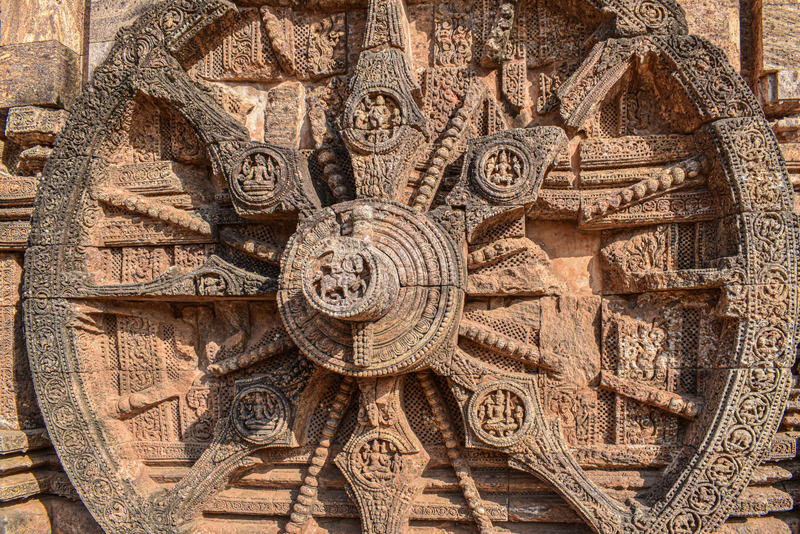
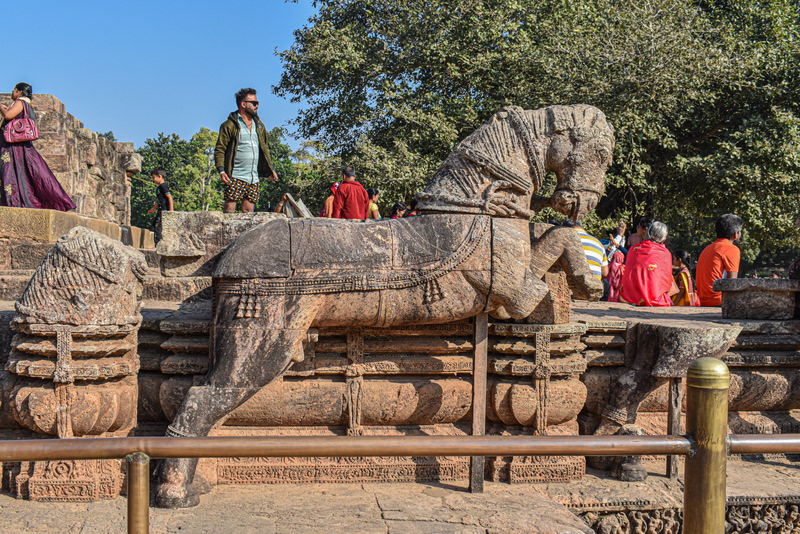
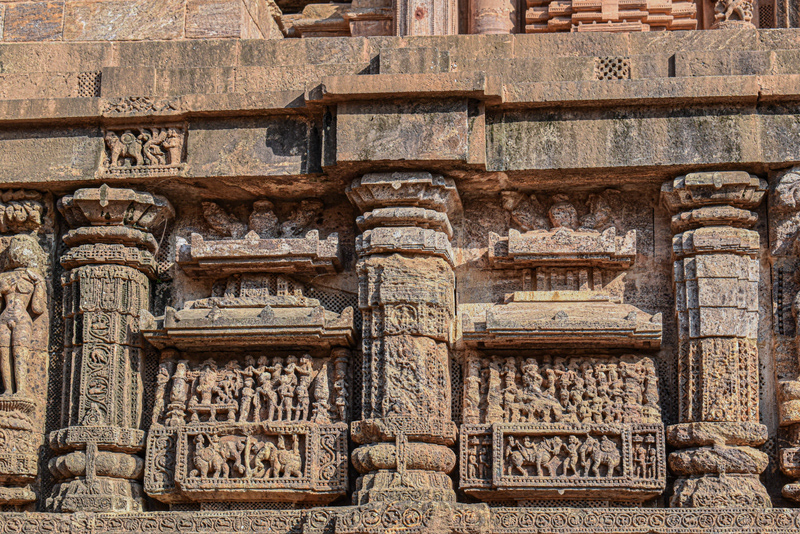
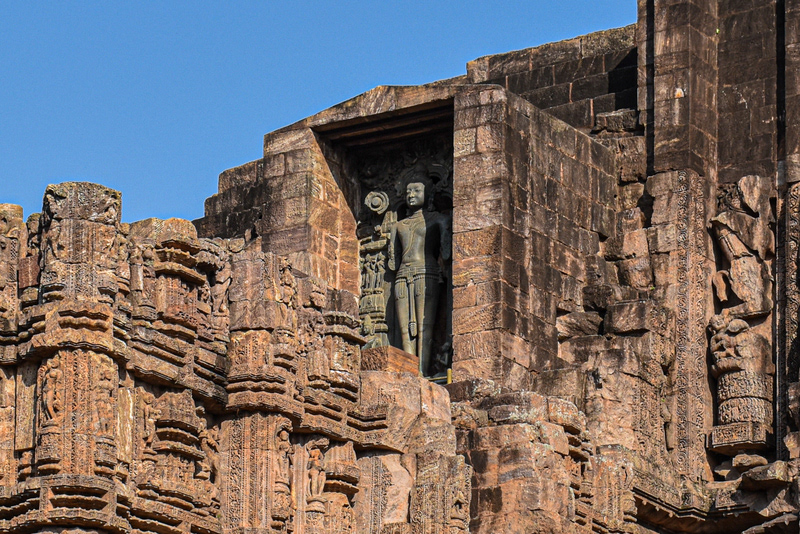





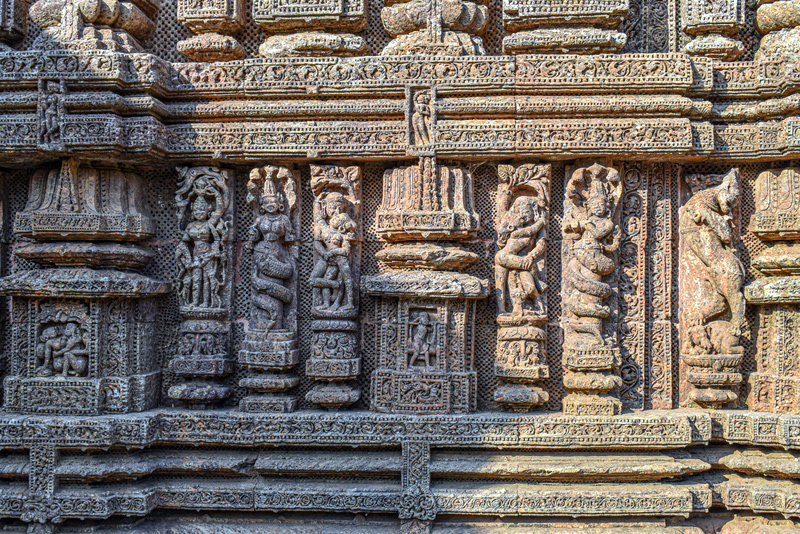
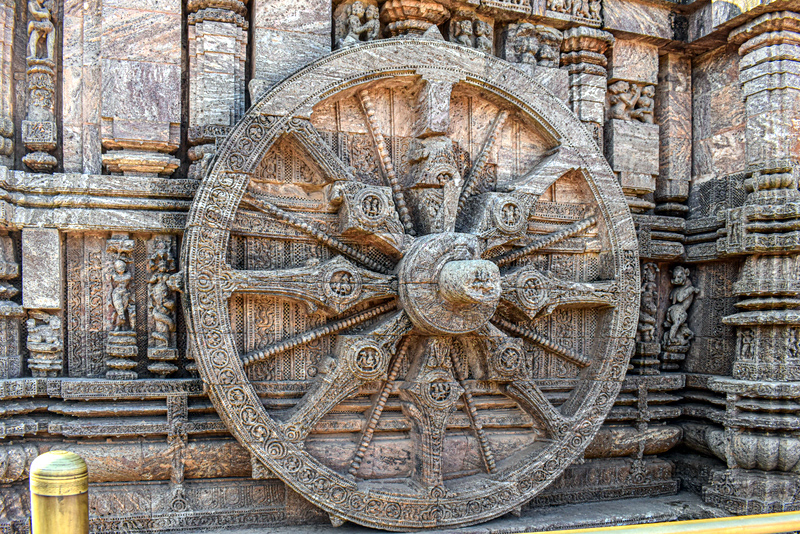
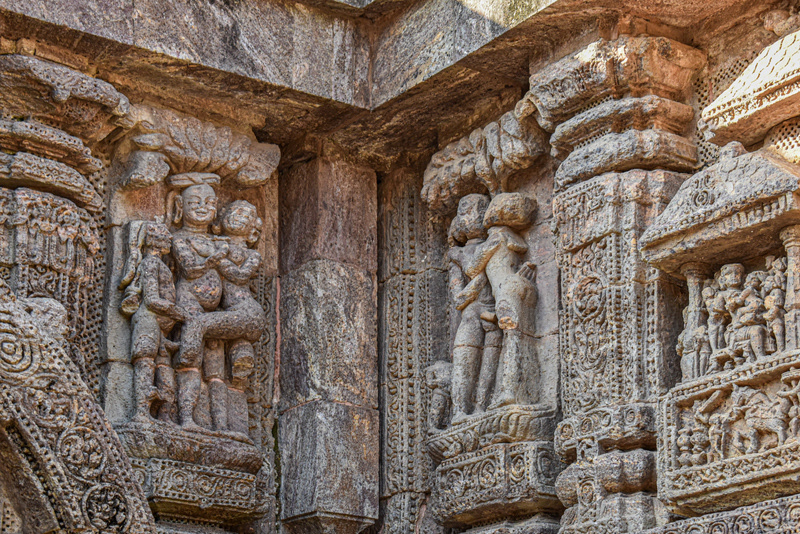

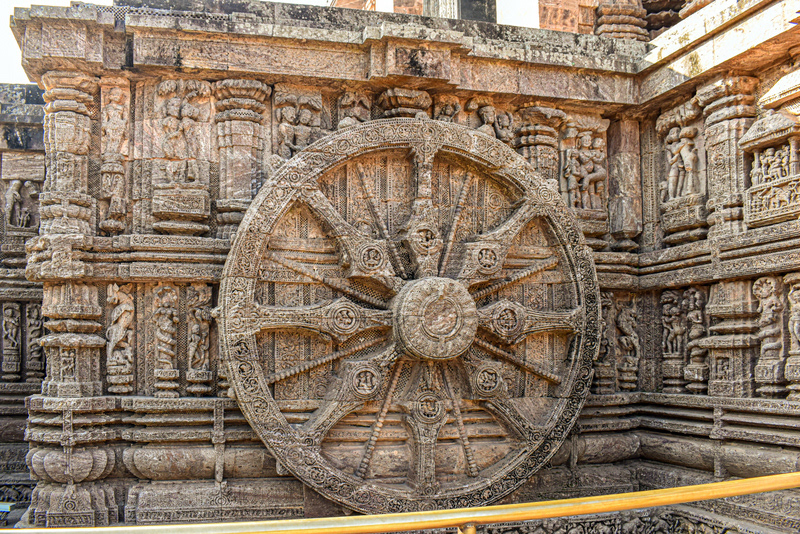

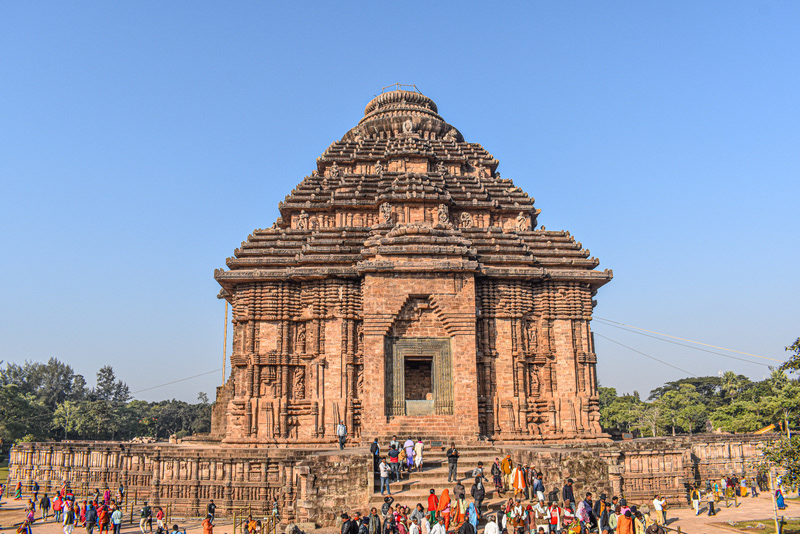
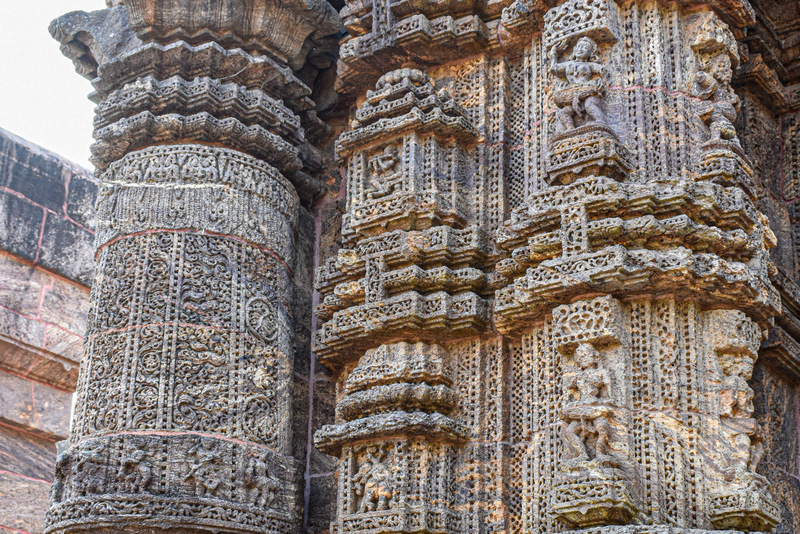

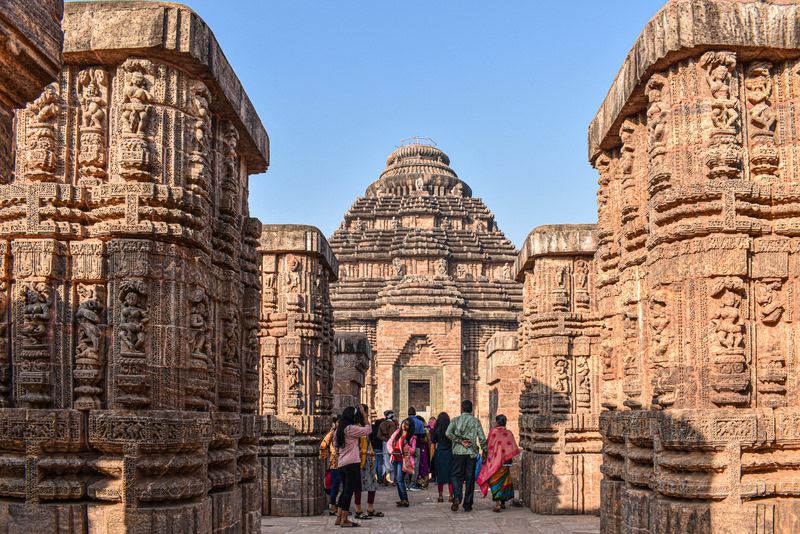

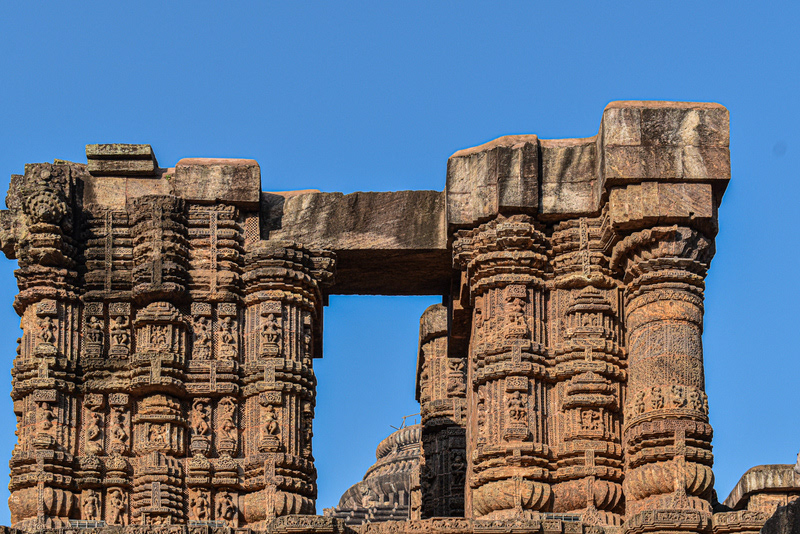
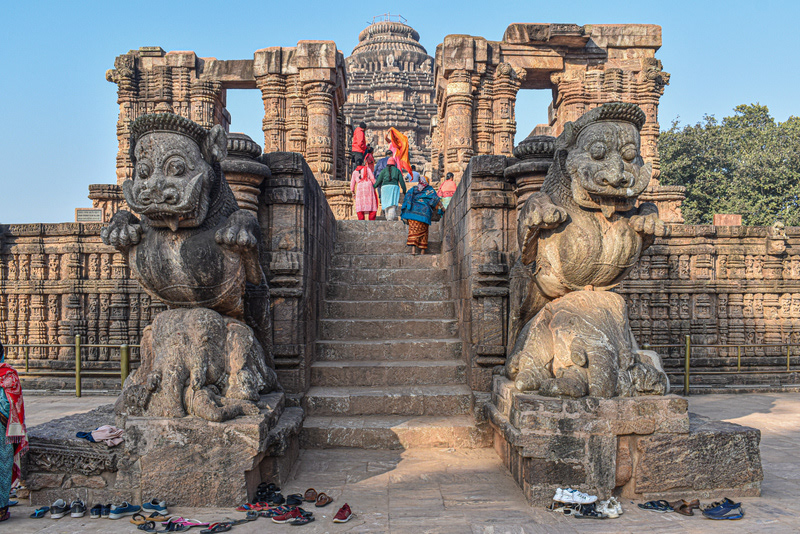
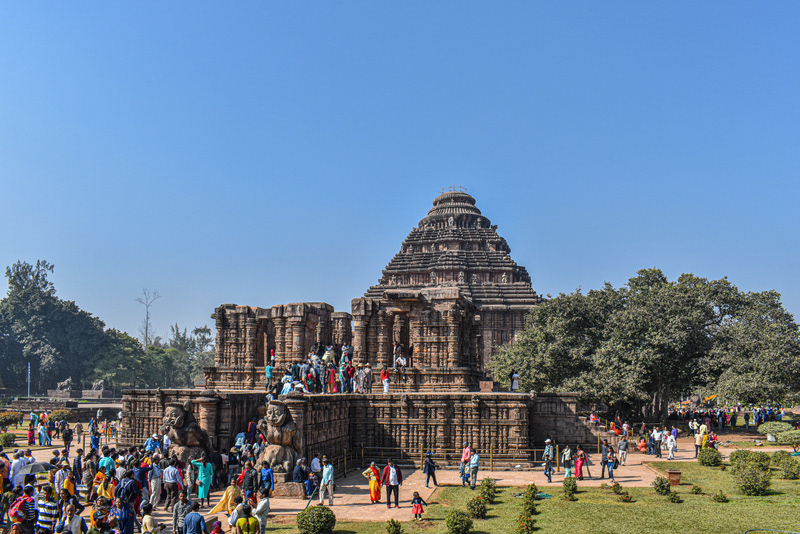
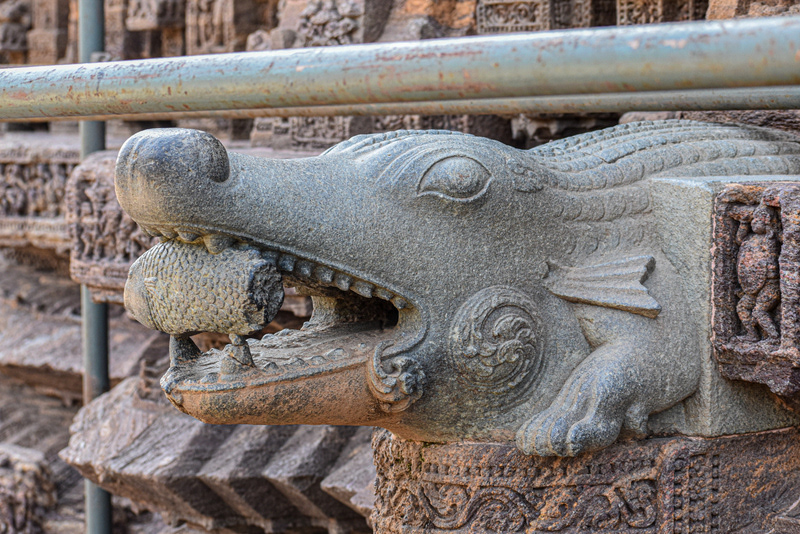
The 13th century Sun Temple at Konark is one of the finest Hindu temples in the country. Dedicated to the Hindu Sun God Surya, the sheer scale of the monument coupled with the exceptional quality of carvings, the picturesque setting, and partially ruined condition makes a visit to this magnificent building unforgettable. Palm leaf manuscripts written in Sanskrit in the Odiya script recoveredin a local village during the 1960s were subsequently translated, contributing greatly to our understanding of how the temple was constructed and the mammoth effort in terms of planning and labour that were involved. These records tell us that the temple was constructed over a 12 year period by a workforce of 1,200 men, on the site of an earlier 9th century temple which was also dedicated to the Sun God Surya. At the entrance are a pair of colossi, two lions rampant on crouching elephants. These two statues are not in their original location but have been relocated here, probably to give that wow factor . These two lions together with a pair of war stallions and a pair of elephants once guarded the three staircases that led to the main temple porch. Beyond the lion colossi is a staircase leading up to the Bhoga Mandapa platform.This is a detached free-standing structure believed to be a festive or dance hall due to the sheer volume of carvings depicting musicians and dancers that almost completely cover the platform, walls and pillars of the hall. The Jagamohana resemble a chariot, with 12 intricately carved giant wheels , pulled by a team of 7 horses. At over 4m high and with the facade richly carved, the temple platform is the highlight of Konark. The motifs here are immensely varied; erotic couples, young women flaunting their beauty in a variety of poses, nagas, vyalas, soldiers, elephants, court scenes, but also images depicting practices and rituals from daily life. The most iconic image of Konark, the magnificent stone carved wheels. With this architectural innovation, the temple is converted into a colossal chariot. Each of the 12 pairs of wheels has eight spokes with a central medallion and protruding central axle, often with an axle pin still depicted. The medallions on the wheel spokes are richly carved depicting numerous deities and erotic and amorous figures in various poses.The salty sea air and heavy seasonal rainfall has played a large part in the deterioration of the carvings. The wheels each have 8 wider spokes and 8 thinner spokes. The distance between two wider spokes represents 3 hours, the thinner spoke between two wider spokes is represents 1.5 hours. There are 30 carved beads between one wider spoke to the next thinner spoke, so each bead represents 3 minutes.






























